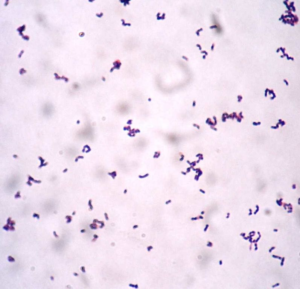Adenovirus
Introduction
- Non-enveloped linear ds-DNA virus. Icosahedral symmetry (70-90 nm diameter).
- The capsid has three major proteins – hexon, penton, and fibre.
- Ubiquitous in nature. Most people are seropositive by the age of 10 years.
- Adenovirus can be divided into 4 genera.
Mammalian adenovirus belongs to the genus Mastadenovirus.
Human adenovirus is a part of this genus.

For high-resolution images, scroll to the bottom of the page

Human adenovirus has 7 species based on their haemagglutination character.
Each species was divided into serotypes based on neutralisation (e.g. A- 12,18, 31). At present, genotyping is being used to classify Adenovirus.
Different species of human adenovirus have different tissue tropism.
| Species | Tissue tropism |
| A | GI, respiratory, urinary |
| B | GI, Eye, respiratory, urinary |
| C | GI, respiratory, urinary |
| D | GI, Eye |
| E | Eye, respiratory |
| F | GI |
| G | GI |

Adenovirus receptors
- Coxsackie B virus–adenovirus receptor (CAR),
- CD46, CD80, CD86
- Sialic acid, heparan sulfate proteoglycans.
Viral replication
Viral replication occurs in the nucleus.

DURING THE REPLICATION PROCESS VIRUS RELEASES PROTEINS TO MODULATE THE IMMUNE SYSTEM
- Inhibit MHC-1 expression
- Downregulation of fas, TNF
- Inhibition of apoptosis (TRAIL receptor)
Latent infection
Adenovirus can remain latent in the T-lymphocytes of the tonsil and adenoid.
Route on transmission
Droplet, faeco-oral.
Adenovirus infection
Adenovirus is commonly seen in 3 groups of people – children, immunocompromised and military recruits.
50% of adenovirus infection is asymptomatic.
Up to 10% of febrile illnesses in children are due to adenovirus.


Laboratory diagnosis:
| Method | Notes |
| Culture | Not readily available outside reference lab/research facility. Serotype 40,41 – cannot be cultured. The patient may shed the virus for days to a couple of weeks, but an immunocompromised patient may shed the virus much longer. |
| Serology | Immunofluorescence assay – low sensitivity (40-60%), lower sensitivity in an immunocompromised patient. ELISA – a fourfold rise in titre is used to diagnose infection. |
| PCR | Commonly used method. Quantitative PCR can be used to measure treatment response. |
| Typing | Haemagglutination, Neutralisation, Whole-genome sequencing, Phylogenetic analysis. |
| Histopathology | Typical finding, smudge cell. |
Treatment:
| Immune reconstitution | Reduction in immunosuppression. |
| Cidofovir | In vitro activity against adenovirus. Limited clinical data. Toxicity – nephrotoxic, GI toxicity. The oral liposomal formulation is being trialled. |
| Ribavirin | Limited clinical data. Active against group C adenovirus. |
| Vidarabine | Limited clinical data. |
| Ganciclovir | Limited clinical data |
| Immunotherapy | Adoptive T-cell therapy. Investigational therapy. |
Vaccine:
A vaccine has been developed for military recruits.

